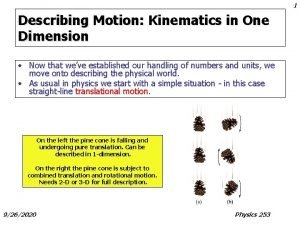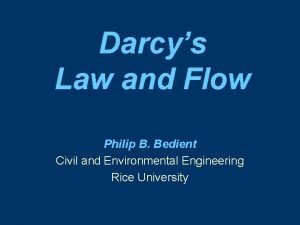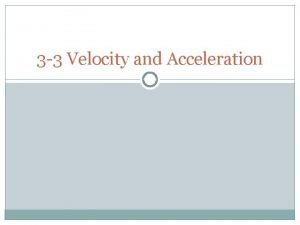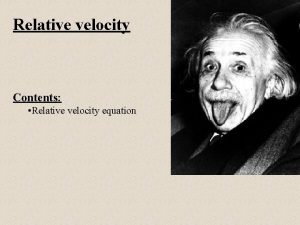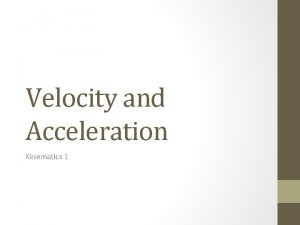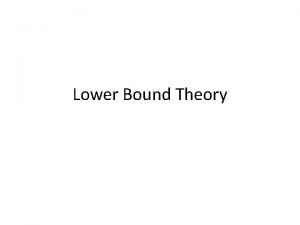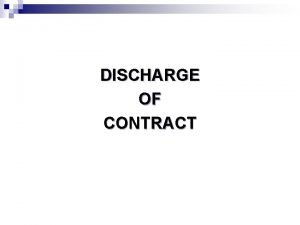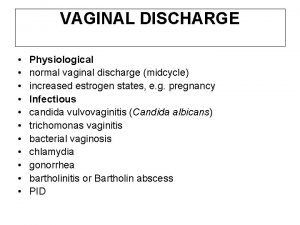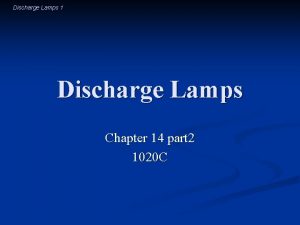Lower discharge Lower velocity Higher Discharge Higher velocity









- Slides: 9

Lower discharge Lower velocity Higher Discharge Higher velocity Why? 1. Increase in discharge 2. Decrease in channel roughness 3. Shape is more semi circular thus reducing friction

Calculating the Hydraulic Radius 1. To understand how to calculate the hydraulic radius of river channels 2. To summarise downstream changes

Hydraulic Radius • This measures the efficiency of a channel. • For an efficient channel you need less friction to occur. What shape river channel would you expect? • To calculate the hydraulic radius you need to be able to work out the; – Cross sectional area – Wetted perimeter

• Cross sectional area = width x height E. g. 2 m x 10 m = 20 m 2 • Wetted Perimeter = the length of the cross section that is in touch with the water. You simply add these figures together. • E. g. 2 m + 10 m + 2 m = 14 metres

• Hydraulic radius = cross sectional area / wetted perimeter E. g. 20 / 14 = 1. 43 The higher the hydraulic radius the more efficient the channel is in carrying the water. The less friction there is!!

ACTIVITY 1. Copy out the diagram on page 27 showing the changes in hydraulic radius downstream. 2. Add cross sectional areas C and D. 3. What do you notice about the hydraulic radius as you move downstream from A to D? C 5 m x 7 m D 8 m x 10 m Extension – can you create cross sectional area E? ? Continue the pattern.

So what? ! Why do we need to know how efficient a river is at carrying its water?

SUMMARY of downstream changes What happens to the following list as you move downstream…. . Downstream § § § § § Turbulence Velocity Friction Discharge Gradient Size of load Amount of load Cross sectional area Channel roughness Hydraulic radius

SUMMARY of downstream changes What happens to the following list as you move downstream…. . Downstream § Turbulence § Velocity § Friction § Discharge § Gradient § Size of load § Amount of load § Cross sectional area § Channel roughness § Hydraulic radius
 Instantaneous velocity vs average velocity
Instantaneous velocity vs average velocity Initial velocity and final velocity formula
Initial velocity and final velocity formula Derivation of darcy's law
Derivation of darcy's law Final velocity initial velocity acceleration time
Final velocity initial velocity acceleration time Tangential speed
Tangential speed Difference between permeability and hydraulic conductivity
Difference between permeability and hydraulic conductivity What does constant acceleration mean
What does constant acceleration mean Minimum velocity
Minimum velocity Linear quantities
Linear quantities Peak discharge
Peak discharge
